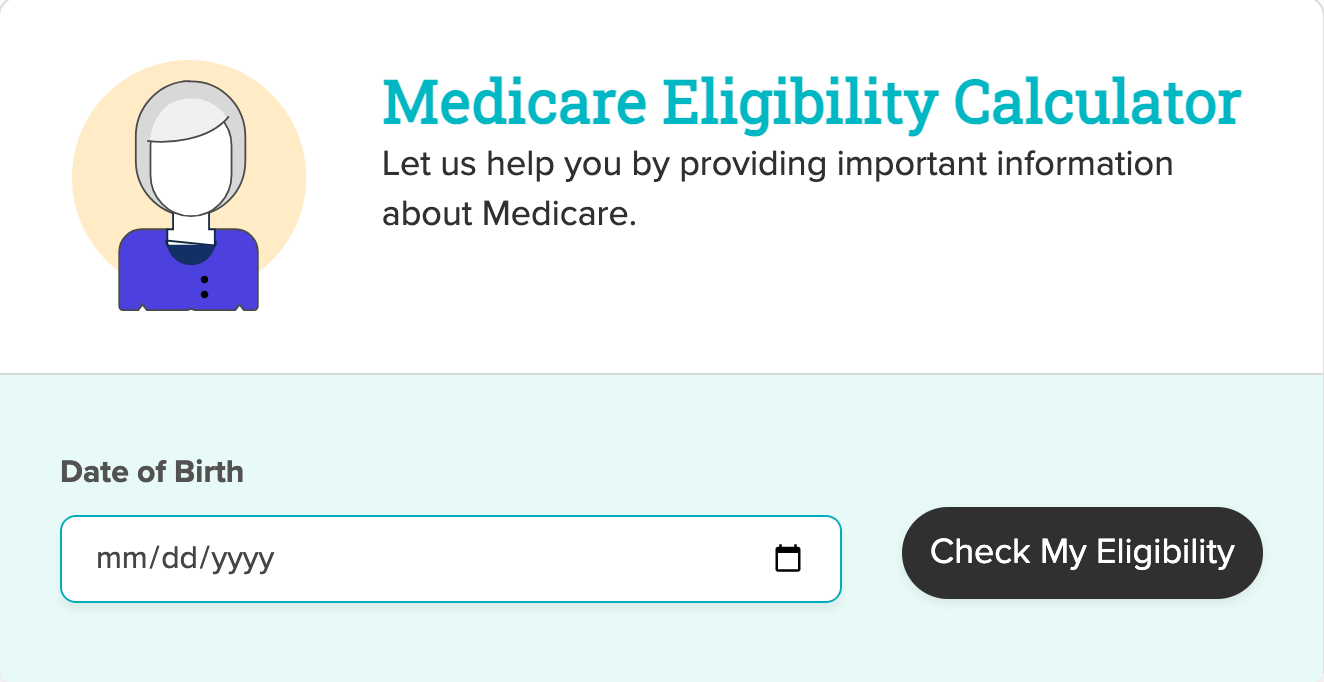Whether you’re signing up for Medicare for the first time or you’re preparing for the annual open enrollment period, you have some decisions to make.
Should you choose Original Medicare or Medicare Advantage? Which Part D prescription drug plan is best for you? Should you buy Medicare Supplement Insurance?
This step-by-step guide can help you find the type of Medicare coverage that’s right for you.
What You Need to Know
Compare Original Medicare and Medicare Advantage
See which drug coverage best suits your needs
If you go with Original Medicare, see which Medigap policy best works for you.
First, let’s take a quick look at the various types of Medicare available.
What Are the Different Types of Medicare?
Original Medicare
Original Medicare consists of Medicare Parts A and B. Part A covers hospitalizations, some skilled nursing facility care, home health care and hospice. Part B covers physician and outpatient services and preventive services. There is government-set cost-sharing with both Part A and Part B. About two-thirds of the 60 million Americans who are eligible for Medicare are enrolled in Original Medicare.
Medicare Advantage
Medicare Advantage plans are sold by private insurers as an alternative to Original Medicare. Medicare Advantage plans, also known as Medicare Part C, may offer additional benefits.
Medicare Part D Prescription Drug Coverage
Medicare Part D prescription drug coverage is also administered by private insurers. Part D is an optional program that covers prescription drugs.
Medicare Supplement Insurance
Medicare Supplement Insurance, known as Medigap policies, help pay for out-of-pocket health care costs you incur with Original Medicare.
Step One: Compare Original Medicare and Medicare Advantage
To determine which type of Medicare coverage is right for you, you’ll need to compare coverage and prices for Medicare Advantage plans available in your area against Original Medicare with or without Supplement Insurance. Here’s what to consider.
What’s Covered by Original Medicare and Medicare Advantage?
One main difference between Medicare Advantage and Original Medicare is access to providers. With Original Medicare, you may visit any provider that accepts Medicare payments.
Medicare Advantage plans usually contract with a network of providers to help keep costs down, enabling most plans to provide additional benefits beyond those offered in Original Medicare.
For any Advantage plan you are considering, you’ll want to check the list of providers to see if your doctors and other healthcare professionals are included in the network. Providers move in and out of networks frequently. So, after you choose a Medicare Advantage plan, you’ll want to check each year during open enrollment to see if there are any changes in your network.
It’s also a good idea to find out which specialists, hospitals, home health agencies and skilled nursing facilities are in the plan’s network.
Some Medicare Advantage plans do allow members to see out-of-network providers. And plans must cover medically necessary out-of-network emergency care. You’ll need to find out under what circumstances and at what extra cost to you.
What Are Out-of-Pocket Costs for Original Medicare and Medicare Advantage?
The majority of Original Medicare beneficiaries pay no premiums for Part A hospitalization insurance. For Part B, monthly premiums for most are $148.50 in 2021. (Premium amounts are adjusted for inflation each year.) Higher income beneficiaries will likely pay more. You may also pay a late enrollment penalty if you delay joining Part B insurance when you’re first eligible. For more details on additional premium costs, read this article on Medicare costs.
Original Medicare comes with premiums, deductibles and coinsurance. Many Original Medicare beneficiaries purchase a Medicare Supplement plan to help with these costs. (More on those later.)
Medicare Part A beneficiaries who have Original Medicare pay an inpatient hospital deductible of $1,484 in 2021 for a benefit period of up to 60 days. There is no coinsurance for hospital stays up to 60 days.
Medicare Part B comes with an annual deductible of $233 for 2022. After you meet the deductible for the year, you typically pay 20% of the Medicare-approved amount for doctor services and other Medicare Part B benefits.
You’ll need to compare these standardized costs of Original Medicare and any additional premium costs for Medicare Supplement Insurance against the costs of Medicare Advantage plans offered in your area.
Medicare Advantage plans typically charge low or even no premiums, but they do include deductibles, copayments and coinsurance that are different from Original Medicare. And, as discussed, you’ll likely pay more if you receive treatment or services outside of the Medicare Advantage plan’s network. Medicare Advantage plans have a yearly limit on how much members will pay in out-of-pocket costs.
Be aware that cost sharing and benefits of the Medicare Advantage plan you choose can change from year to year. If you choose Medicare Advantage and are happy with your coverage, you will still need to look for changes and compare plans during every Medicare open enrollment period.
Medicare.gov offers a tool to help compare Medicare Advantage Plans.
Step Two: Determine the Best Drug Coverage for Your Needs
If you choose Original Medicare, you also have the option of joining a Part D prescription drug plan. You’ll pay an extra premium for the plan and you’ll need to compare plans available in your area for both coverage and cost.
If you decide on Medicare Advantage, it’s likely your Part D prescription drug coverage is included in the plans you are considering. If it isn’t, you can purchase Part D coverage separately.
Whether you are evaluating stand-alone Part D plans or Part D coverage included in Medicare Advantage plans, you’ll need to carefully compare plans you are considering, taking a close look at the following.
What Is a Drug Formulary?
Part D plans include a list of covered prescription drugs, called a formulary. This list will likely include both brand name and generic drugs and includes at least two drugs in the most commonly prescribed categories. A specific formulary may not include your medication but may include a similar option.
Formularies change from year to year and even within the year so it’s important to check regularly that the medicines you need are included in your Part D coverage.
You’ll also want to check for any restrictions that the insurers put on drug coverage. This may include prior authorization before a drug is prescribed, limits on the quantity of certain drugs and step therapy, in which generic and lower cost brand name drugs are required before the most expensive drug is used.
This interactive tool on Medicare.gov can help you find a Part D plan that covers your prescriptions.
What Are Your Total Part D Costs?
Premium costs for Part D vary by plan. As with Medicare Part B, high earners will pay an extra charge on top of their premium. You may also pay a late enrollment penalty if you delay joining Part D insurance when you’re first eligible and you don’t already have prescription drug coverage.
Here is more information on how Part D late enrollment penalties are calculated.
When comparing Part D plans, look beyond premiums and investigate what you’ll pay in total costs among the plans that include the drugs you need in their formularies. Here’s what to check.
- The maximum Part D deductible us $445 in 2021 for all plans, but plans can choose to have a lower deductible.
- Copayments and coinsurance. Part D and Medicare Advantage plans with prescription drug coverage almost always charge a copayment or coinsurance for each of the medicines you purchase. Copays are a set amount you pay for each prescription filled, say $10 or $20. Coinsurance is the percentage of the drug cost that you pay, such as 10% or 20%.
- Cost structure. Part D coverage uses a tiered cost-sharing structure. This means you will pay a different price for different categories of drugs. In general, you’ll pay more in copays or coinsurance for brand name drugs and less for generics.
Some Part D costs are consistent among plans. For instance, with every plan you’ll face more cost sharing if you hit the coverage gap, also known as the donut hole. In 2020, when you and your insurer have paid $4,130 in prescription drug costs, you are then responsible for 25% of all of your medicine costs.
That 25% cost sharing will continue until you enter into what’s known as Medicare Part D catastrophic coverage. This happens when you spend a total of $6,550 for out-of-pocket costs for your prescription drugs. This total does not include the insurer-paid portion of your prescription drugs. When you are in the catastrophic coverage phase, you will pay 5% of the cost of your drugs, or $3.70 for generics and $9.20 for brand-name drugs, whichever is greater. You pay this catastrophic rate for the remainder of the plan year.
Step Three: Which Medicare Supplement Insurance should You Choose?
Medicare Supplement Insurance helps cover the out-of-pocket health care costs you can incur with Original Medicare Part A and Part B and hospice and home health care services. (If you have an Advantage plan, you may not purchase Medicare Supplement Insurance.) There are 10 standardized plans and premiums are regulated by the states. Massachusetts, Maine and WIsconsin have their own standardization. What you pay in monthly premiums can depend on where you live, what coverage you get and how old you are. You can learn more in this guide on comparing and selecting plans, with a side-by-side comparison of the different policies.
As you explore your options, keep in mind one caveat. During open enrollment, it’s easy to move from one Medicare Advantage plan to another, change your stand-alone Part D prescription plan or move from traditional Medicare to Medicare Advantage.
What is more complicated, however, is moving from Medicare Advantage to Original Medicare. That’s because, in all but four states, if you don’t sign up for a Medigap policy within six months of the time Medicare Part B begins, insurers can deny you coverage based on preexisting conditions, such as asthma, heart disease, diabetes or a pending surgery.
This can significantly change the cost structure of your coverage.
Knowing what types of Medicare choices are available can help you determine which plan is right for your healthcare needs.


